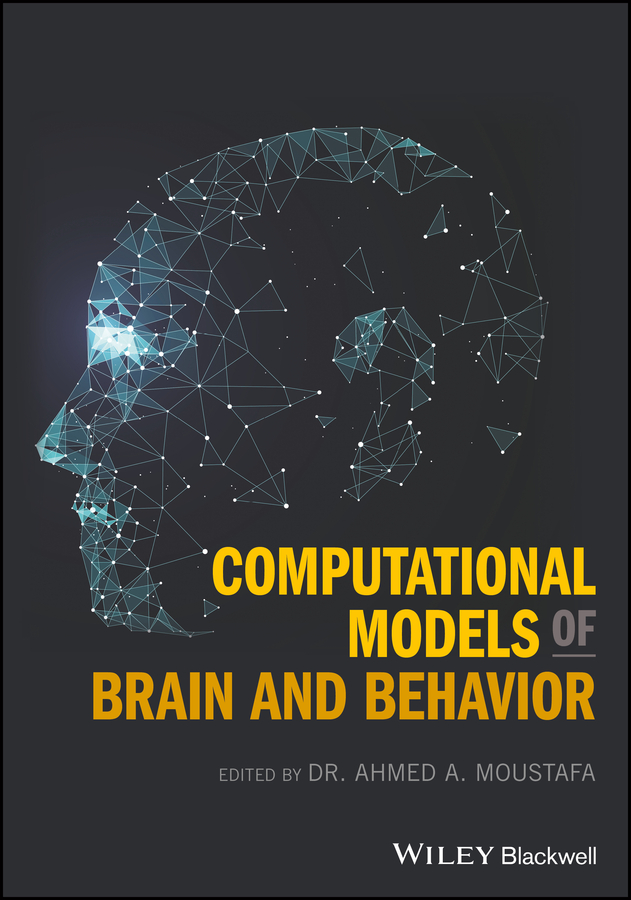Электронная книга: Ahmed Moustafa A. «Computational Models of Brain and Behavior»

|
A comprehensive Introduction to the world of brain and behavior computational models This book provides a broad collection of articles covering different aspects of computational modeling efforts in psychology and neuroscience. Specifically, it discusses models that span different brain regions (hippocampus, amygdala, basal ganglia, visual cortex), different species (humans, rats, fruit flies), and different modeling methods (neural network, Bayesian, reinforcement learning, data fitting, and Hodgkin-Huxley models, among others). Computational Models of Brain and Behavior is divided into four sections: (a) Models of brain disorders; (b) Neural models of behavioral processes; (c) Models of neural processes, brain regions and neurotransmitters, and (d) Neural modeling approaches. It provides in-depth coverage of models of psychiatric disorders, including depression, posttraumatic stress disorder (PTSD), schizophrenia, and dyslexia; models of neurological disorders, including Alzheimer’s disease, Parkinson’s disease, and epilepsy; early sensory and perceptual processes; models of olfaction; higher/systems level models and low-level models; Pavlovian and instrumental conditioning; linking information theory to neurobiology; and more. Covers computational approximations to intellectual disability in down syndrome Discusses computational models of pharmacological and immunological treatment in Alzheimer's disease Examines neural circuit models of serotonergic system (from microcircuits to cognition) Educates on information theory, memory, prediction, and timing in associative learning Computational Models of Brain and Behavior is written for advanced undergraduate, Master's and PhD-level students—as well as researchers involved in computational neuroscience modeling research. Издательство: "John Wiley&Sons Limited"
ISBN: 9781119159070 электронная книга Купить за 11582.49 руб и скачать на Litres |
Другие книги схожей тематики:
| Автор | Книга | Описание | Год | Цена | Тип книги |
|---|---|---|---|---|---|
| Tobias Egner | The Wiley Handbook of Cognitive Control | Covering basic theory, new research, and intersections with adjacent fields, this is the first comprehensive reference work on cognitive control– our ability to use internal goals to guide thought… — John Wiley&Sons Limited, электронная книга Подробнее... | 13186.89 | электронная книга |
См. также в других словарях:
Computational creativity — (also known as artificial creativity, mechanical creativity or creative computation) is a multidisciplinary endeavour that is located at the intersection of the fields of artificial intelligence, cognitive psychology, philosophy, and the arts.… … Wikipedia
Brain — This article is about the brains of all types of animals, including humans. For information specific to the human brain, see Human brain. For other uses, see Brain (disambiguation). A chimpanzee brain The brain is … Wikipedia
Metastability in the brain — In the field of computational neuroscience, the theory of metastability refers to the human brain’s ability to integrate several functional parts and to produce neural oscillations in a cooperative and coordinated manner, providing the basis for… … Wikipedia
Models of neural computation — are attempts to elucidate, in an abstract and mathematical fashion, the core principles that underlie information processing in biological nervous systems, or functional components thereof. This article aims to provide an overview of the most… … Wikipedia
Human brain — The human brain controls the central nervous system (CNS), by way of the cranial nerves and spinal cord, the peripheral nervous system (PNS) and regulates virtually all human activity.Cite web|url=http://encarta.msn.com/encyclopedia… … Wikipedia
Massimiliano Versace — (born in Monfalcone, Italy, December 21, 1972) is a senior research scientist in the Neuromorphics Lab at Boston University in the Department of Cognitive and Neural Systems, where he founded and is currently the director of the Neuromorphics Lab … Wikipedia
